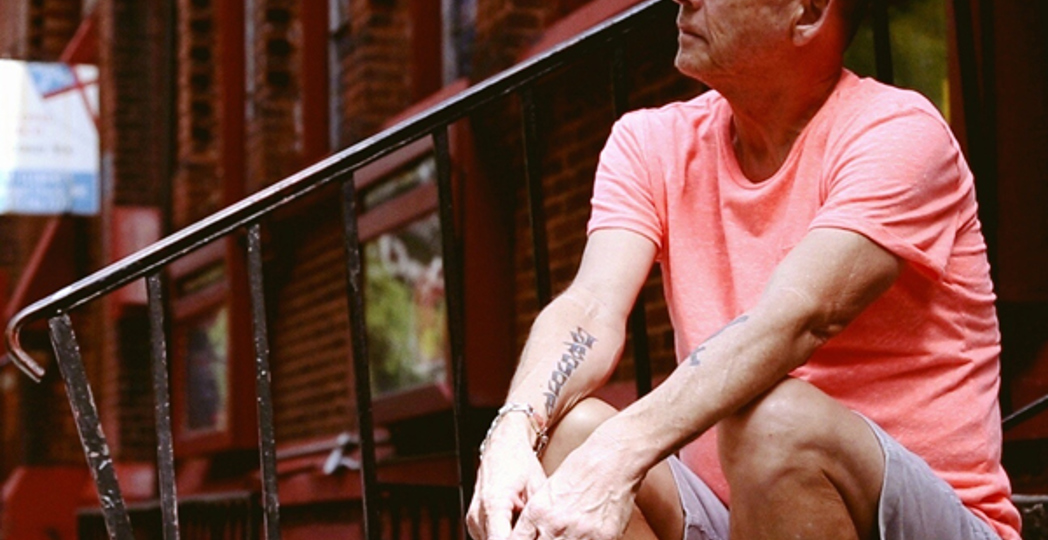Scream Queen Explores A Different Kind of Elm Street Nightmare
by Barry Goodrich | Apr. 2, 2019 | 4:15 PM

In 1985, Hollywood's rampant homophobia proved a nightmare for actor Mark Patton. Landing the starring role as Jesse Walsh in A Nightmare on Elm Street 2: Freddy’s Revenge should have been cause for celebration, but it soon brought the closeted Missourian unwanted notoriety as the horror genre’s first male scream queen.
Widely panned by critics, A Nightmare on Elm Street 2 was rife with homophobic and homoerotic imagery. Script writer David Chaskin denied there was any gay subtext to Patton’s character, essentially blaming the actor for both the film’s tone and its critical reception. Patton received vicious hate mail and reeled from his own private struggle with his sexuality. Feeling profiled and discriminated against, Patton would go on to leave the film business altogether, moving to Mexico. But eventually, the sequel was largely reclaimed by the LGBTQ community, becoming a cult favorite and benchmark for queer cinema.
Patton’s tale of scorn and eventual redemption is retraced in Scream Queen! My Nightmare on Elm Street, screening April 5 and 6 at the Cleveland International Film Festival. The documentary follows the actor during his time on the press tour for the film's 30th anniversary in 2015.
“Mark is really raw and open abut what happened to him,” says Matthew Chojnacki, a Cleveland-based producer on the film and award-winning pop culture writer. “He was a little apprehensive about going on that tour but it was a little bit of redemption for him. This documentary is the only movie where he’s been given a fair shake.”
Patton is be in town for the CIFF screenings, which Chojnacki hopes attract two diverse audiences — horror devotees and LGBTQ viewers. The Baldwin-Wallace University alum talks with us about the 55-year-old actor’s emotional journey on the path back from show business discrimination.
Q: A Nightmare on Elm Street 2: Freddy’s Revenge is now considered a campy, gay culture-influenced film that departed from the normal boundaries of the genre. How was it received 34 years ago?
A: It’s an interesting study in what was written for the film and how they got away with it. The script was written with a lot of sexual undertones during a time when people were homophobic and AIDS-phobic. In a lot of the movies in the 1980s, "f****t" was an acceptable word. They said a lot of stuff you could never get away with today. My parents wouldn’t allow me to see Porky’s but they let me see A Nightmare on Elm Street 2.
Q: Why did Patton become the fall guy for Elm Street 2's negative reception?
A: They were trying out this new thing of having a guy be the winner at the end of the movie. It had always been a girl who had been the hero. It turned out to be the perfect storm of exploiting him. This was all happening on top of how his agents were treating him [poorly] when his boyfriend died. His personal life collapsed.
Q: What did you learn about Patton during the three years of filming this documentary?
A: He kept peeling back layers of this onion you didn’t know existed. Sometimes with a documentary, you start off one way and find a story in another place. It’s kind of hard not to like him. It’s all about how he has owned this … he’s squeezing lemonade out of this huge lemon he was given.
Q: What can audiences learn from this film?
A: People should always think about how they are treating others. It’s easy to get swept up in making fun of people, particularly actors. Making that movie put Mark in a hole for over 20 years. He’s now enjoying his third act in a lot of ways.
Trending
-
1
-
2
-
3
-
4
-
5










